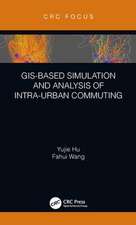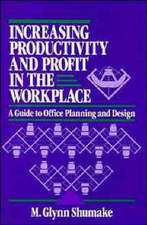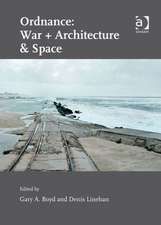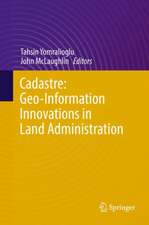Infrastructure and the Architectures of Modernity in Ireland 1916-2016
Autor Gary A. Boyd, John McLaughlinen Limba Engleză Paperback – 22 noi 2017
Preț: 374.25 lei
Nou
Puncte Express: 561
Preț estimativ în valută:
71.61€ • 74.96$ • 59.60£
71.61€ • 74.96$ • 59.60£
Carte disponibilă
Livrare economică 10-24 martie
Livrare express 21-27 februarie pentru 41.92 lei
Preluare comenzi: 021 569.72.76
Specificații
ISBN-13: 9781138572362
ISBN-10: 1138572365
Pagini: 232
Dimensiuni: 240 x 220 x 23 mm
Greutate: 0.69 kg
Ediția:1
Editura: Taylor & Francis
Colecția Routledge
Locul publicării:Oxford, United Kingdom
ISBN-10: 1138572365
Pagini: 232
Dimensiuni: 240 x 220 x 23 mm
Greutate: 0.69 kg
Ediția:1
Editura: Taylor & Francis
Colecția Routledge
Locul publicării:Oxford, United Kingdom
Public țintă
Professional Practice & DevelopmentNotă biografică
Dr Gary Boyd is Reader in Architecture, Queen's University Belfast, UK and John McLaughlin is Principal of John McLaughlin Architects, Dublin, Ireland. Together they co-commissioned/curated the Irish Pavilion, Venice Biennale 2014.
Recenzii
’Rather than the monuments, places and things that dominate most accounts of architectural modernity, Infrastructure and the Architectures of Modernity in Ireland shifts attention to less visible networks, systems and connections. Emphasizing the effects of Ireland’s rurality, and of its position midway between Europe and the USA, the essays here make the case for stuff like electrification, telephone networks, highways, airports, and data storage as being most symptomatic of the Irish experience of the modern. This is fresh research, and the book is a valuable new addition to the now growing number of alternative narratives of modernity.’ Adrian Forty, Bartlett School of Architecture, UCL, UK
Cuprins
List of Illustrations, About the Editors, About the Contributors, Acknowledgements, Introduction, 1 Negation: The General Post Office and a Collapsing of Time, 2 Power: Are You Getting the Light? Ardnacrusha, the Rural Electrification Scheme and Illuminating Ireland’s Peripheries, 3 Health: Sanatoria and the Search for an Irish Paimio, 4 Bus Transportation – Córas Iompair Éireann and Michael Scott, 5 Media: America at Home – The RTÉ Television Centre, 6 Aviation: Into the West – Rineanna and the Jumbo Jet, 7 Education: ‘My father has got a tractor shed like this’ – The Doyles, the Concrete Frame and the Democratisation of Education, 8 Telecommunications: Infrastructural Adhocism, 9 Roads: ‘We must have motorways’ – Ireland, the Highway and Modernity, 10 Data: Clouds and Precipitation, Index
Descriere
At the formation of the new Republic of Ireland, the construction of new infrastructures was seen as an essential element in the building of the new nation. Accordingly, infrastructure became the physical manifestation, the concrete identity of these objectives and architecture formed an integral part of this narrative. Moving between scales and from artefact to context, Infrastructure and the Architectures of Modernity in Ireland 1916-2016 provides critical insights and narratives on what is a complex and hitherto overlooked landscape, one which is often as much international as it is Irish. In doing so, it explores the interaction between the universalising and globalising tendencies of modernisation on one hand and the textures of local architectures on the other.


















